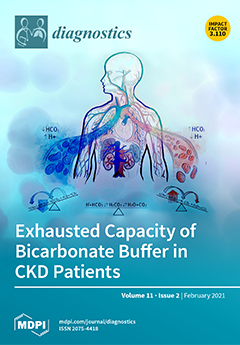The prognostic value of multiple glycemic parameters in poisoned patients was never assessed. We aim to explore the effects of glucose variability on short-term outcomes in nondiabetic and diabetic patients acutely poisoned with undifferentiated xenobiotics. We performed a prospective observational study in a tertiary center for toxicology in northeastern Romania. Over the course of 3 years, we included 1076 adults, older than 18 years, admitted for acute poisoning with a xenobiotic. The mortality rate was 4.1%. The admission blood glucose level (BGL) predicted mortality (OR 1.015, 95% CI 1.011–1.019,
p < 0.001) and complications (OR 1.005, 95% CI 1.001–1.009,
p 0.02). The mean glucose level (MGL) after admission (OR 1.007, 95% CI 1.000–1.013,
p 0.034) and coefficient of glucose variability (CV) were predictive for complications (OR 40.58, 95% CI 1.35–1220.52,
p 0.033), using the same multivariable model. The receiver operating characteristic curve (ROC) analysis revealed that BGL had good predictive value for in-hospital mortality (area under the curve (AUC) = 0.744, 95% CI = 0.648–0.841,
p < 0.001), and complications (AUC = 0.618, 95% CI = 0.584–0.653,
p < 0.001). In patients acutely poisoned with xenobiotics, the BGL, MGL and CV can be useful as mortality and short-outcome predictors.
Full article






